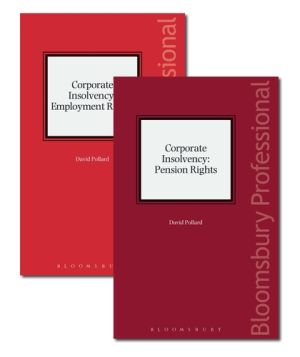
Corporate Insolvency: Employment and Pension Rights is the only book of its kind to successfully bridge the gap between the three distinct disciplines of pensions, employment and corporate insolvency law by drawing out the legal principles applicable where the different legal regimes interact.
Following discussions with the author, we believe there is an opportunity to broaden its appeal and for this new 6th edition of Corporate Insolvency: Employment and Pension Rights the book has become two separate, stand-alone volumes:
The rationale behind this decision is that traditionally legal practitioners, solicitors and barristers, tend to specialise in one area only whether, in this case, it be employment law, pensions law or insolvency law. The structure of the current edition is such that the first half focuses on the application of the rules relating to corporate insolvency and how they impact on employees with the second half of the book focusing on how they impact on pensions.
Whilst there is some overlap in the issues that need to be considered, the majority of issues that need to be considered by employment practitioners and pensions practitioners in relation to corporate insolvency are different. This makes it very easy to split in to two stand-alone volumes. As the book is published currently there is information that is superfluous to employment practitioners and information that is superfluous to pensions practitioners, by splitting it in to two stand-alone volumes we will be able to target the relevant volumes more effectively in to these disctinct markets whilst keeping the insolvency market serviced by the pack.
Both volumes will cross-refer heavily to each other thereby maintaining the connection between the two titles for the pack.
How this book can help you in your work
Through a mix of legislation, case law, analysis and comment, this well-regarded text will give you all the information you need to answer your clients' questions.
It outlines the legal principles applicable where the three regimes interact, with a particular focus on the application of the rules relating to corporate insolvency and how they impact on employees and their pension rights. For example:
Corporate Insolvency: Employment and Pension Rights is cited in many works focusing on the employment, pensions and insolvency fields. If you work as an employment practitioner, pensions practitioner, corporate insolvency practitioner or accountant, you will find its up-to-date case law and practical analysis an essential aid to your work.